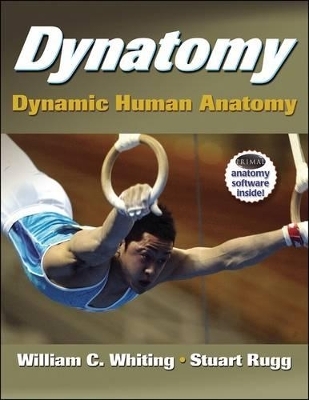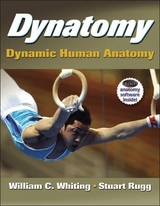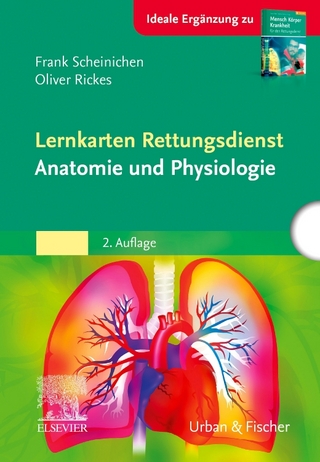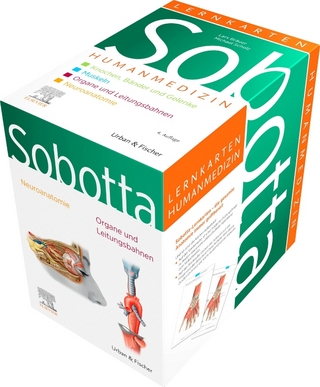
Dynatomy
Human Kinetics Publishers
978-0-7360-3682-5 (ISBN)
- Titel erscheint in neuer Auflage
- Artikel merken
The emphasis of Dynatomy is on dynamic muscular motions rather than structural anatomy. Students benefit from a discussion of simple and complex human movements combined with an analysis of muscles in motion. The text also introduces the muscle control formula and explains how students can use it to identify the way in which muscles contract during various examples of human movement.
Part I presents an overview of the anatomical foundations of movement and the essential requirements for movement control. Part II examines dynamic movements and basic mechanics, muscular function, fundamental movements, and specialized movements.
The book is packed with features that will deepen students' appreciation of human movement:
-A wealth of unique illustrations and photos complement the text and improve understanding of difficult concepts.
-Chapter objectives, key terms, review questions, and summaries encourage students to interact with and remember the content.
-Movement analyses give students critical exposure to functional human movements.
Interactive Anatomy CD Included!
Completing the text is a new Primal Pictures CD-ROM titled Essentials of Interactive Functional Anatomy (IFA Essentials). This software will help students thoroughly review components of structural anatomy through the use of computer-graphic models of human anatomy derived from MRI scan data. Fully interactive 3-D animations show muscular and joint function.
IFA Essentials features a complete high-resolution 3-D model of the human musculature. The model can be rotated and allows for 11 layers of anatomy to be visually removed--from muscles down to bones. Specific muscles within the 3-D model can be highlighted, allowing users to view accompanying text about the selected muscle, such as name, primary action, agonists, antagonists, proximal and distal attachments, innervation, and blood supply. Text also accompanies specific ligaments within the model, providing information on function, injury mechanism, and pathology of injury.
The CD also includes 34 animations--each of which can be viewed from four different angles--showing clinical muscular function and providing students with a sense of the movement around joints. Four video clips of gross human motions demonstrate complete body movements, such as sit-ups and push-ups, coupled with live-action video clips showing the electrical stimuli of active muscles. To reinforce the content, IFA Essentials also offers an interactive quiz. Students can select the level of difficulty and number of quiz questions and then use a multiple-choice format to identify or locate various structures on the model.
William Whiting is director of the Biomechanics Laboratory and professor of kinesiology at California State University, Northridge. He has taught courses in biomechanics for more than 20 years and has published numerous articles and research abstracts. Stuart Rugg is chair of the department of kinesiology at Occidental College, Los Angeles. His research interests include biomechanics, physics and human performance.
Part I: Anatomical Foundations and Essentials of Movement ControlChapter 1. Introduction to Human Anatomy and Movement-Introduction to Human Anatomy-Introduction to Human Movement-Movement Across the Lifespan-Anatomical Concepts-Levels of Structural Organization-Anatomical References and Terminology-The Study of Human MovementChapter 2. Osteology and the Skeletal System-Functions of the Skeletal System-Bone Histology-Skeletal System Organization-Bone Adaptation-Bone Health Chapter 3. Joint Motion and The Articular System-Joint Structure and Classification-Joint Motion and Movement Description-Types of Joint Movement -Joint Structure and Movement Chapter 4. Myology and the Muscular System-Functions of Skeletal Muscle-Structure of Skeletal Muscle -Muscle Injury, Pain, and Soreness Chapter 5. Muscles of Movement -Muscle Names -Functional Actions of Muscle -Muscles of Major JointsChapter 6. Mechanics of Movement -Biomechanical Concepts -Movement Mechanics-Fluid Mechanics-Joint Mechanics -Material Mechanics Part II: Applied DynatomyChapter 7. Muscular Control of Movement and Movement Assessment -Muscle Function -Muscle Action -Coordination of Movement -Movement Efficiency -Muscle Redundancy -Movement AssessmentChapter 8. Fundamentals of Posture, Balance, and Walking -Posture and Balance -WalkingChapter 9. Fundamentals of Running, Jumping, Throwing, Kicking, and Lifting -Running -Jumping -Throwing -Kicking -Lifting Chapter 10. Analysis of Exercise and Sport Movements-Resistance Training -Two Common Sport Movements -DanceChapter 11. Future Directions of Human Movement Studies -Advances in Medicine and Technology -Demographic Trends -Social Trends -Limits to Human Performance
| Erscheint lt. Verlag | 29.8.2005 |
|---|---|
| Zusatzinfo | 275 black & white illustrations, 49 black & white halftones |
| Verlagsort | Champaign |
| Sprache | englisch |
| Maße | 216 x 279 mm |
| Themenwelt | Studium ► 1. Studienabschnitt (Vorklinik) ► Anatomie / Neuroanatomie |
| ISBN-10 | 0-7360-3682-2 / 0736036822 |
| ISBN-13 | 978-0-7360-3682-5 / 9780736036825 |
| Zustand | Neuware |
| Haben Sie eine Frage zum Produkt? |
aus dem Bereich



